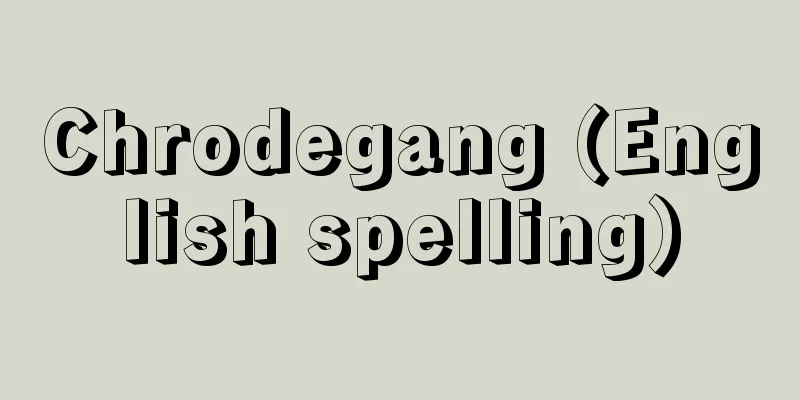Double grave system

|
One of the Japanese grave systems. It is a grave system based on burial, where in addition to a grave where the remains are buried (burial grave), a grave where one can visit for memorial services is also provided for one deceased person. It is called a double grave system, as opposed to a single grave system in which memorial services are continued in the grave where the remains are buried. Cases are mainly distributed from the Kanto to Chugoku and Shikoku regions, and are extremely rare in the Tohoku and Kyushu regions. The general tendency is to visit the burial grave for a certain period after death, and then visit the visit grave after that. In many places, the focus of memorial services is shifted to the visit grave during memorial services held within a year after the death, such as on the seventh day, 49th day, 100th day, and first anniversary, but there are also places where it is several years or even a dozen years later. The circumstances surrounding the establishment of each individual case of the double grave system are not simple. There are cases where the separation of buried graves and visit graves arose as a result of the development of cemeteries after the Meiji period. However, the religious belief that supports the double grave system is that although the remains are impure, the soul of the deceased is pure after a certain period of time has passed. Japanese funerals were originally double burials, with two stages: a temporary burial, which was anciently called "magari," and a main funeral, in which the remains were properly disposed of. Memorial services after death in a buried grave are equivalent to those in a temporary funeral, and the form remains in which a cursed relative approached the impure remains and performed memorial services. Burial graves are also thought to have arisen as temporary burials, which were above ground, changed into burials similar to a main funeral. The widespread custom of taking some of the soil from the buried grave when moving to a visit grave corresponds to the movement of the remains from the temporary to the main burial site. Visited graves are often marked by a gravestone, and some believe that the double grave system arose when gravestones became common among common people and were erected in a location separate from the burial site. Visited graves are strongly influenced by Buddhist beliefs and have the character of a sacred place for offering prayers to the souls of the dead. The practice of burying hair and nails in a visited grave is similar to the practice of placing hair and nails in the ossuary of a temple such as Mount Koya in hopes of attaining enlightenment after death. Even in the single grave system, it is not uncommon for memorial facilities equivalent to a visited grave, such as a memorial hall, to exist outside the grave. Even after moving to a visited grave, there are cases in which the buried grave is treated not much differently from a single grave, with people visiting both graves during Bon and Higan. The archaic word for burial is hafuru, which means to throw away, and some believe that burial tombs are remnants of facilities where remains were abandoned. There are in fact cases where burial tombs were not looked after at all after burial, but these are few in number and cannot be given much importance. However, it is not thought that the remains were simply abandoned in the burial tomb. There is also a burial custom in which only the bones are taken from the burial tomb and reburied in a pilgrimage tomb, and this is also related to the issue of bone washing burials in the Ryukyu Islands. Burial tombs are associated with the belief in the memorial service for the remains, while pilgrimage tombs are associated with the belief in the worship of the souls of the dead. Burial tombs come in shapes that are thought to be signs of old-fashioned graves, such as stones arranged in a circle with one stone standing in the middle, or small round stones piled up in a cone shape. [Yo Kojima] "Pilgrimage to the Grave" by Takayoshi Mogami (1956, Kokin Shoin) [Reference] |Source: Shogakukan Encyclopedia Nipponica About Encyclopedia Nipponica Information | Legend |
|
日本の墓制の一つ。土葬を基調とする墓制で、1人の死者のために遺骸(いがい)を埋葬する墓(埋め墓)のほかに、供養のために詣(まい)る墓(詣り墓)を設ける。遺骸を埋葬した墓で供養を続ける単墓制に対して両墓制とよぶ。事例はおもに関東から中国、四国地方に分布し、東北、九州地方にはきわめて少ない。死後一定期間だけ埋め墓に詣り、それ以後は詣り墓に詣るというのが一般の傾向である。初七日、四十九日、百箇日、一周忌など、死後1年の間の法事を機会に、詣り墓に供養の中心を移す所が多いが、数年、十数年後という土地もある。 両墓制の個々の事例の成立事情は単純ではない。明治以後、墓地を整備したために、埋め墓と詣り墓の別が生じたという例もある。しかし、宗教的に両墓制を支えているのは、遺骸は穢(けが)れているが、ある期間を経た死者の霊魂は清浄なものとする観念であろう。日本の葬法は本来二重葬的で、古く「もがり」などとよばれた仮葬と、本格的に遺骸を処置する本葬との二段階があった。埋め墓での死後の供養は仮葬での供養に相当し、忌みのかかった親族が穢れのある遺骸に近づいて供養を行った形をとどめている。埋め墓は、地上葬であった仮葬が本葬のような埋葬に変化したために生じたとも考えられる。詣り墓に移るとき、埋め墓の土をすこし持って行くという習俗が広くみられるのは、仮葬地から本葬地への遺骸の移動に対応している。 詣り墓は墓石によって標示されることも多く、両墓制は、庶民の間に墓石が普及したとき、埋葬地とは別の場所に墓石を立てたために生じたとする見方もある。詣り墓には仏教信仰の影響を受けた、死者の霊魂を供養する聖地の性格が強い。詣り墓に髪や爪(つめ)を葬るというのは、高野山(こうやさん)など寺院の納骨堂に髪や爪を納めて死後の成仏を願うのと共通している。単墓制でも、供養堂など詣り墓に相当するような供養施設が墓以外の形で存在する例は珍しくない。詣り墓に移ったあとも、盆や彼岸(ひがん)などには両方の墓に詣るなど、埋め墓が単墓制の墓とあまり違わない扱いを受けている場合もある。 葬ることを古語でハフルというのは、捨てるという意味で、埋め墓は遺骸を放棄する施設の名残(なごり)とする考えもある。現に埋め墓を埋葬後まったく顧みないという例もあるが、数も少なく、これを重視することはできない。ただ埋め墓に捨てたとも考えられない。埋め墓から骨だけを収め、詣り墓に改葬する葬法もあり、さらには琉球(りゅうきゅう)諸島の洗骨葬の問題とも関連してくる。埋め墓は遺骸供養の信仰に、詣り墓は死者の霊魂祭祀(さいし)の信仰にかかわっている。埋め墓には、石を円形に並べて中央に石を一つ立てたものや、小さな丸石を円錐(えんすい)形に積み上げたものなど、古風な墓のしるしと思われる形態のものがある。 [小島瓔] 『最上孝敬著『詣り墓』(1956・古今書院)』 [参照項目] |出典 小学館 日本大百科全書(ニッポニカ)日本大百科全書(ニッポニカ)について 情報 | 凡例 |
<<: Rhodochrosite (rhodochrosite)
>>: Territorial state - Territorialstaat (German)
Recommend
Due process of law
Due process of law. In Japan, it is also translate...
Newly hatched larva
The term refers to the larvae of silkworms immedia...
Kaleidoscope - Mangekyou
A toy (gangu) made by applying the principle of t...
Struve, GWLvon (English spelling)
...The following six people are famous as astrono...
Tsu [city] - Tsu
A city in central Mie Prefecture. Established as a...
Cosmic egg (English name) Cosmicegg
…In other words, the larger the eggs that are lai...
Cabora Bassa Dam
…It enters Mozambique, turns from east to southea...
Laser radar
A radar that uses laser light. It emits a pulsed l...
Progesterone
Pregn-4-ene-3,20-dione. C 21 H 30 O 2 (314.46). O...
Usugeyamazakura - Usugeyamazakura
...It grows in the mountains and fields of Honshu...
Cross-voting
…Elections are thus conducted between political p...
Ashendene Press
…British publishing, which had long lagged behind...
Ashvamedha (English spelling)
An Indian horse shrine. A festival held by kings w...
Jan van der Heyden
1637‐1712 Dutch streetscape and architectural pain...
Pavo (the Peacock)
Its abbreviation is Pav. It is a small southern co...









